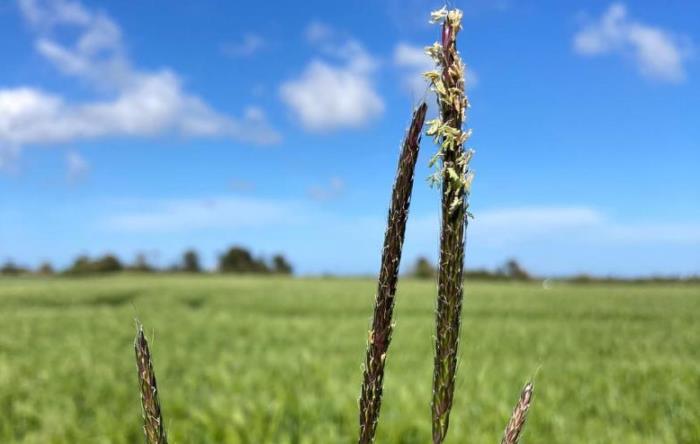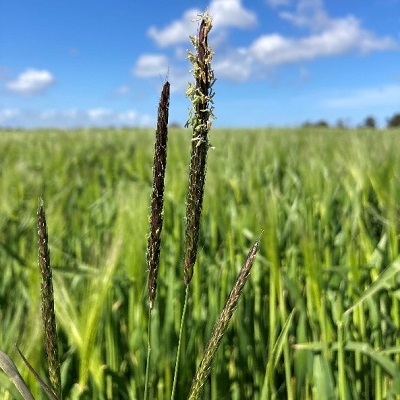23 May 2024
Take action on blackgrass

Teagasc Crops Specialist, Shay Phelan advises growers to walk their crops in the coming days and weeks, as blackgrass has already started to flower in some crops. He also offers key advice on the management of spring cereals and beans.
Blackgrass has already started to flower in some crops, so growers should walk their crops in the coming days and weeks to make sure that they don’t have any issues. Waiting until June will be too late, as the grass will have set seed and will be starting to shed seeds.
Growers should take a zero tolerance approach to grass weeds, as these problems will only increase over the coming years. It is estimated that blackgrass is costing UK growers between €400-500/ha. In many areas, it is now endemic meaning they will never eradicate it. We should all ensure that this does not become the same here.
Italian ryegrass is also quickly becoming a problem on many farms and a similar zero tolerance approach needs to be taken. Both grasses have the capability to develop herbicide resistance in 3-4 years.
Figure 1: Blackgrass in flower

Spring cereals
BYDV
BYDV is now starting to show in early-drilled crops of spring barley, so it’s likely that the later-sown crops will be at risk from infection. Dr. Tom Kennedy’s work is still relevant and shows that a single application of an insecticide at leaf 4 will give the best control. See table 1 below:
Table 1. Insecticide applications compared
| GS spraying | % BYDV | Yield t/ha |
|---|---|---|
| 2 leaf | 17.2 | 5.1 |
| 4 leaf | 8.6 | 5.6 |
| 2 leaf + 4 leaf | 8.0 | 5.5 |
| 4 leaf + first node | 6.7 | 5.5 |
| First node | 24.7 | 5.1 |
| Second node | 27.5 | 4.8 |
| GS 12+14+24+31 | 5.7 | 5.5 |
| Untreated | 36.4 | 4.3 |
| LSD (5%) | 5.986 | 0.506 |
This work also shows that a single application is enough to control BYDV.
Weed control
Most spring cereals will need weed control over the coming week or so. The current mild growth will help the herbicides to work. Generally a mix of a Su at ½ to 2/3 rate, plus a mixer product e.g. Hurler or Galaxy, will give good control over a broad range of broadleaf weeds. In spring wheat or barley, wild oats can also be an issue and many growers are including Axial Pro with the weed spray for convenience. Be aware, however, that you will need to keep the rate of Axial Pro at a minimum of 0.6L/ha.
Plant growth regulator
Most of the spring wheat and spring oats will soon need an application of a plant growth regulator (PGR). Apply 2.0L/ha 750 CCC or Moddus/Medax + 1.0L CCC to all crops at GS 32 for maximum shortening effect in oats. In wheat, the most benefits from the same products will be seen at GS 31, Terpal will also be an option in wheat up to GS 39, but only if crops are not being used for mushroom compost.
Disease control
Ryncho and net blotch are now evident in many spring barley crops, so consider using half rate Proline + a half rate of a strob (Comet) or SDHI (Imtrex). Comet will have good activity on net blotch. Apply these at early tillering stage to protect the tillers.
Wheat and oats are relatively clean at the moment, but the current weather could make mildew pressure increase in susceptible varieties. In oats, Decoy Comet has been a popular mix over the last few years with the prothioconazole giving some mildew control. However, where there is a lot of pressure from mildew in the crop, use Midas to give good knock down control. Likewise in spring wheat, mildew tends to be more of an issue than septoria so ¾ rate Decoy + Comet is probably a good option too; however add in Folpet at 1.5L/ha for extra control and resistance management.
Beans
There is quite a bit of been weevil damage in spring bean crops at present. Since there is no threshold for treatment, if you can see damage then you should consider a treatment with a pyrethroid insecticide e.g. Lambda etc.
Broad leaf weeds have been controlled in most crops at this stage, but grass weeds can still be controlled using a graminicide up to early flowering.
For more advice and tips from the Teagasc Tillage Specialist team, check out the Teagasc Tillage Edge Podcast.
